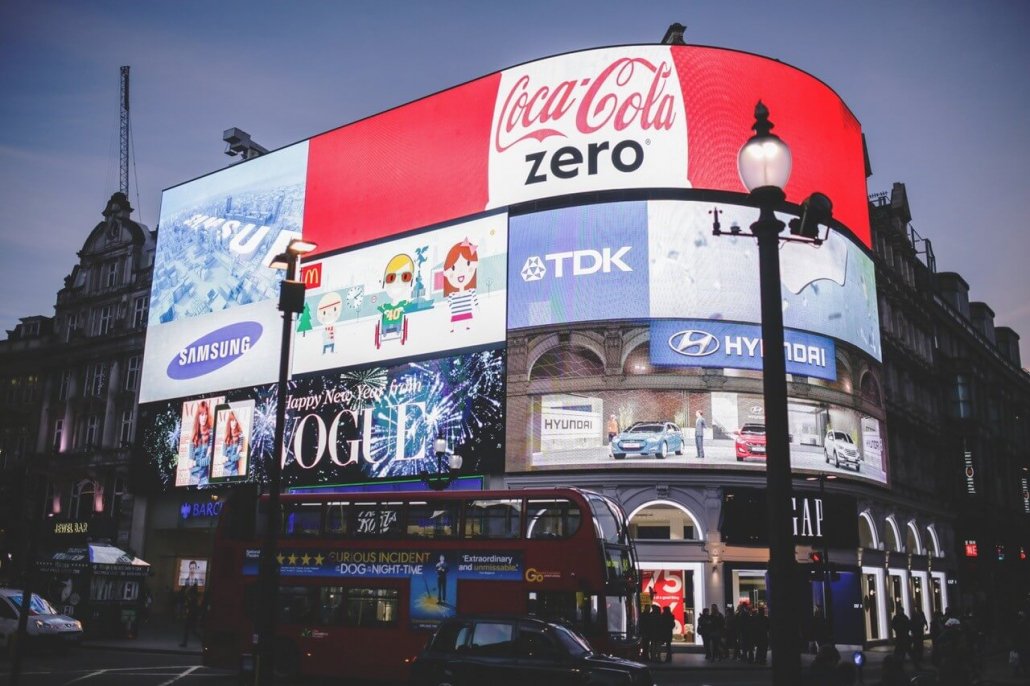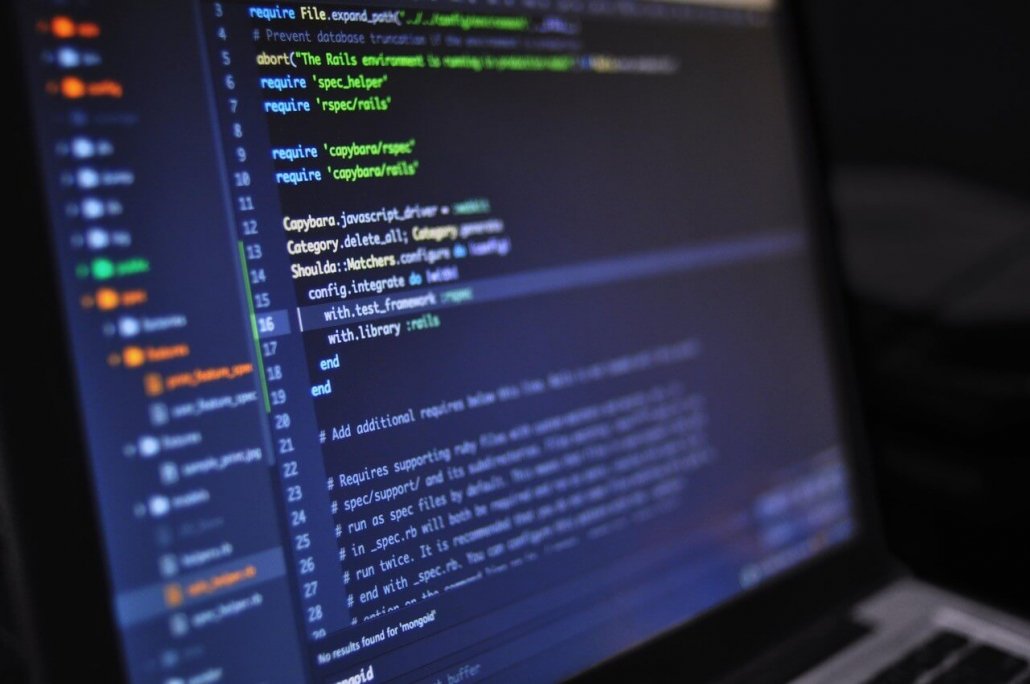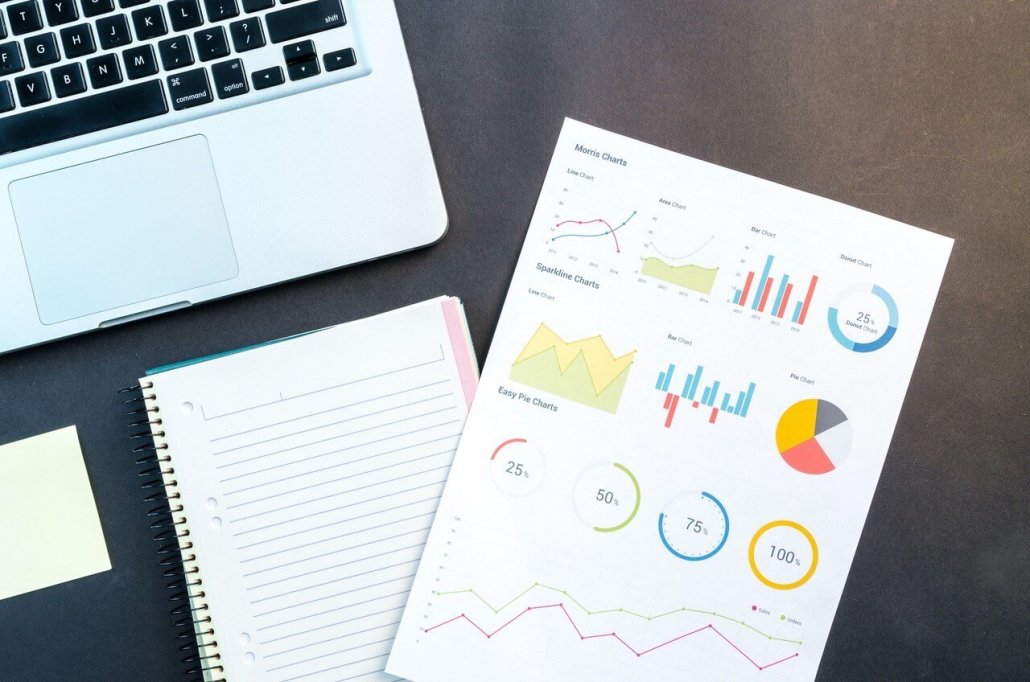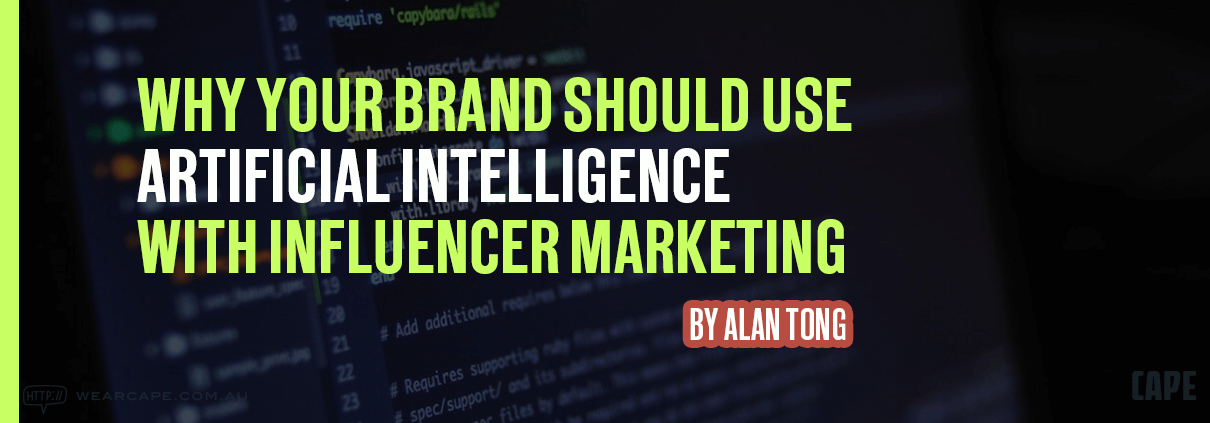Why should your brand use Artificial Intelligence (AI) with Influencer Marketing?
The rise of Influencer Marketing
Once upon a time, successful advertising was all about artistic flair, creativity, and financial power. Throw enough money at an advertising agency to produce an engaging 30 second television advertisement, along with some eye-catching print advertisements for magazines and newspapers, and your company was bound to make an impact within the minds of consumers. In modern times, this is no longer the case.

Nowadays, brands are no longer the gatekeepers of content creation; consumers are empowered to create content that can be easily shared online, through social media platforms such as Instagram and YouTube. As a result of this phenomena, a new wave of influencer marketing has emerged.

It’s important to note here that the concepts behind influencer marketing have existed long before the advent of YouTube and Instagram. Leveraging celebrities to promote products is something that brands, and marketers have done for a long time. What makes this new wave of influencers so different is that often these people are not celebrities in the traditional sense, but rather everyday people that have gained a following in a specific niche by creating content relevant to such niche.
This digital revolution has led to a huge increase of new influencers who have all garnered loyal audiences based on the success of their content. The result of this is an increasingly more diverse social media landscape as consumers are being exposed to a greater spectrum of content and thus audience fragmentation occurs. In order for marketers to reach the most loyal and engaged audiences within this digital environment of audience fragmentation, leveraging the power of niche influencers is crucial. Hence, influencer marketing was born.
Additionally, a decrease in the number of people watching TV and engaging in traditional forms of media such as magazines and newspaper, as well as the rise of ad-blockers in web browsers, has reaffirmed word of mouth as a highly efficient type of marketing in today’s digital environment.

Furthermore, due to the diverse audience fragmentation, the old methods of engaging with a few celebrities in marketing does not translate well in this new digital era. It is often more effective in the online world to market through influencers, who have specific knowledge, expertise and most importantly, followers, that align with the brand and their products.
This blog post is less about what influencer marketing is, and more about the direction in which influencer marketing is heading towards. The advent of Artificial Intelligence has the potential to revolutionise the industry and address many of the flaws of the Influencer Marketing status quo.
The current issues with Influencer Marketing
According to OpenInfluence, influencer marketing can deliver 6.5 to 11 times higher return on investment (ROI) compared to traditional digital banner ads alone; however, there are still issues within the realm of influencer marketing that need to be resolved.
#1 Lack of transparency regarding the “influence” of influencers
Perhaps the biggest caveat of influencer marketing is that a large following does not always equate to significant influence. Often, the price an influencer can charge for a campaign depends on their engagement metrics (likes per post, shares per post, number of followers, etc.). Due to the prevalence of fake engagement and social bots, these metrics pose an issue to marketers and brands.
If brands solely rely on such metrics when choosing to work with influencers, they may end up over-paying influencers as well as over-estimating the results that they will receive. Not to mention that compensating influencers based solely on follower count creates a massive incentive for them to amass fake followers.
#2 Lack of objectivity when analysing visual content
There is an inherent difficulty when evaluating visual and aesthetic qualities; it is a highly subjective task and can be perceived differently by individuals. Due to this lack of objectivity, marketers can be skewed by their own personal biases; this may affect campaign performance.
#3 Strenuous influencer selection process
The digital environment contains a vast number of influencers to choose from; often the process of finding an influencer and matching their persona with the marketer’s brand can be painstakingly meticulous. Not only this, but since the majority of images shared online have no identifying text or hashtags, they are very difficult to track; to accurately identify these posts, marketers must analyse the content within the image one at a time, further exacerbating the process.
As explained above, there are glaring issues with influencer marketing which limit it from reaching its true potential. However, whilst influencer marketing may not be perfect, the fact remains that it is still one of the most effective ways to market brands within the digital landscape. All that is missing is to refine and solve the complications presented above. Thankfully, AI presents a modern solution for these modern problems.
AI Powered Influencer Marketing
AI is incredibly powerful; to the extent that it is fundamentally changing the rules of influencer marketing for the better. The influencer marketing industry is moving towards a more automated process where influencer search, content analysis, fraud prevention amongst a wide range of needs, can all be handled by AI – saving countless man-hours along the way.
1) Image recognition systems
In today’s digitalized environment, image recognition is at a maturity where it can truly add tangible value to the workflow of marketers. It can accurately identify objects, places, people, writing and actions within images; all these can help a marketer save considerable amounts of time, since machine learning is able to rapidly sort through and identify images quicker than any human ever could.

This process is even more crucial when considering that influencers often do not post consecutive streams of thought with their images, often just a few words or emojis. Hashtags can prove to be unreliable since not every influencer uses them, and even if they are used, there is no guarantee that their meanings are aligned with the content of the post.
This is why AI and machine learning can be so useful in the marketing process; through AI, marketers can analyze millions of images and video content in a matter of seconds and identify those with pre-determined characteristics accurately. These characteristics could be images containing a certain logo or product, the musical style of a video, or even the people in an image and their facial expressions. Utilizing machine learning can save marketers the headache of looking through each image and tagging those that are relevant to them. A study from Open Influence found that AI could do the work of 1000 people when it comes to this process.
2) Understanding contextual engagement
Artificial Intelligence not only tags the content relevant to certain keywords or criteria, but it can also understand the context within an image to provide a deeper level of analysis. People often say that a picture is worth a thousand words; now with AI, brands have a better idea of what those thousand words are.
Consider an image of a mother playing with her child; there are so many elements to analyse. A viewer would be able to see the outfits of mother and child, the scenery, the tone and lighting and so on. All of these elements could impact the performance of a post- AI would be able to help identify how audiences post about specific objects, and hence have a better idea of exactly what type of style and content is the most engaging for consumers.

Using this data-centric approach can help reduce the bias that humans have when selecting content and influencers. Instead of relying on a human approach of analysing visual and aesthetic qualities to maximize engagement, AI can find the type of content that objectively has higher engagement. Marketers can therefore use these metrics as guidelines when planning future content.
3) Preventing fraud
Spam and bot accounts on social media creating fake engagement are almost as prevalent as influencers nowadays. As more money is spent on influencer marketing, there is more incentive for people to cash in on the trend. “Wannabe influencers” have found ways to fool the system, either through buying fake followers, likes or even comments.
Using AI can help brands make smart decisions and ensure results. By tracking data points and variables such as:
- Engagement over time on various topics
- Follower count over time
- Number of repeated sponsored posts over time (the more the better)
AI can produce an “Authenticity score” to correctly gauge influencers and weed out the fake influencers from the real ones.
The way forward
AI is a game-changer in the way it is able to positively impact influencer marketing for the better. By properly leveraging the power of AI with a more scientific approach, marketers can make more informed decisions, reduce risks and ultimately maximize ROI. The present and future of influencer marketing is AI, and its potential is limitless.

Alan Tong
Alan Tong is a Bachelor of Commerce Graduate from the University of Melbourne. He harbors a strong interest in social media marketing, particularly in how data science can assist and change the digital marketing landscape. His friends would describe him as “sometimes funny”. Alan’s thoughts can be found at linkedin.com/in.atong3







